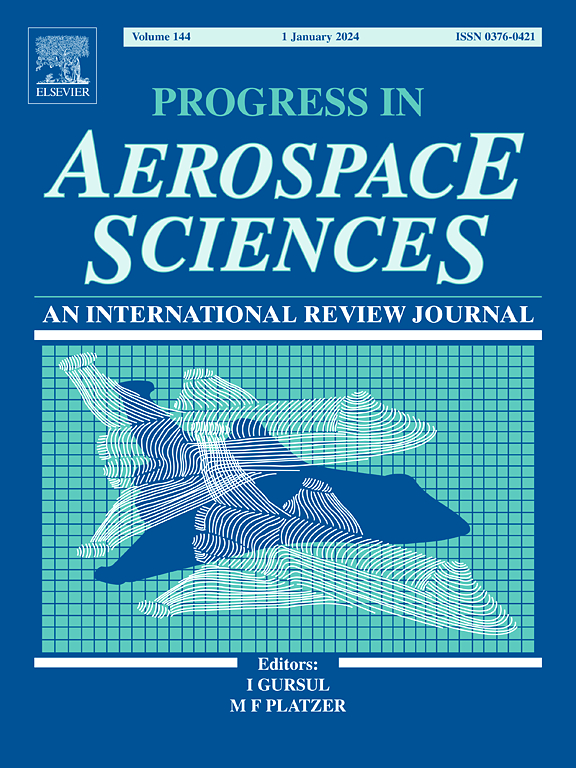无人飞行器低空空域管理与先进空中机动性研究进展
IF 11.5
1区 工程技术
Q1 ENGINEERING, AEROSPACE
引用次数: 0
摘要
无人驾驶飞机系统交通管理(UTM)和先进空中机动(AAM)的当代趋势正在重新定义低空空域的运行,特别是在城市和郊区,传统的空域管理方法不足以支持预测的航空运输需求。为了应对这些挑战,综合低空空域管理(LAAM)框架的发展被视为必不可少的下一步,需要针对这些环境的独特挑战量身定制新的飞行系统和基础设施。包括自动化和人工智能(AI)在内的网络技术在LAAM中发挥着至关重要的作用,通过整合来自通信、导航和监视(CNS)系统的数据,支持分离保障和流量管理的实时和自动化决策。虽然人工操作员和社会互动在LAAM协同决策过程中仍然发挥着非常重要的作用,但由于需要有效管理日益增加的高度自动化和无人驾驶飞机数量和多样性所带来的挑战,预计对自动化的依赖将继续增长。监管框架必须适应空对空操作的独特特点,确保安全标准和空域法规的充分性。特别是,空域设计必然会发展,以适应垂直/短距起降(V/STOL)飞机的独特能力和要求。在安全关键系统中部署人工智能将需要严格的验证、确认和认证流程,以确保可靠性和可信度。为了解决这些复杂且相互关联的挑战,需要一个协调的LAAM操作概念(CONOPS),它应该封装UTM和新兴的AAM需求,同时明确指定各种自动化级别的人工操作员的角色。此外,应该开发新的系统功能,通过关注基于CNS性能的空域建模和动态空域管理来增强人机协作。基于这些前提,一种多域交通管理(MDTM)的综合方法正在出现,为在所有现有和可能的未来空域中实现高度自动化和自主飞行系统的安全、高效和可持续运行提供了前景广阔的前景。本文章由计算机程序翻译,如有差异,请以英文原文为准。
Advances in low-altitude airspace management for uncrewed aircraft and advanced air mobility
Contemporary trends in Uncrewed Aircraft Systems Traffic Management (UTM) and Advanced Air Mobility (AAM) are redefining low-altitude airspace operations, particularly in urban and suburban settings where traditional airspace management approaches are inadequate to support the predicted air transport demands. To address these challenges, the development of an integrated Low-Altitude Airspace Management (LAAM) framework is seen as an essential next step, requiring new flight systems and infrastructure tailored to the distinct challenges of these environments. Cyber technologies, including automation and Artificial Intelligence (AI), play a crucial role in LAAM by integrating data from Communication, Navigation, and Surveillance (CNS) systems to support real-time and automated decision-making for separation assurance and flow management. While human operators and social interactions retain a very important role in LAAM collaborative decision-making processes, the reliance on automation is expected to continue growing, driven by the need to effectively manage the challenges arising from the increasing number and diversity of highly automated and uncrewed aircraft. Regulatory frameworks must adapt to accommodate the unique characteristics of AAM operations, ensuring the adequacy of safety standards and airspace regulations. In particular, airspace design is bound to evolve to accommodate Vertical/Short Take-off and Landing (V/STOL) aircraft’s distinct capabilities and requirements. The deployment of AI in safety-critical systems will require rigorous verification, validation, and certification processes to ensure reliability and trustworthiness. To address these complex and interrelated challenges, a harmonized LAAM Concept of Operations (CONOPS) is needed, which should encapsulate both UTM and emerging AAM requirements, while clearly specifying the role of human operators for various levels of automation. Additionally, new system functionalities should be developed to enhance human-machine teaming by focussing on CNS performance-based airspace modeling and dynamic airspace management. Based on these premises, an integrated approach to Multi-Domain Traffic Management (MDTM) is emerging, with promising future perspectives for the safe, efficient and sustainable operation of highly automated and autonomous flight systems in all present and likely future classes of airspace.
求助全文
通过发布文献求助,成功后即可免费获取论文全文。
去求助
来源期刊

Progress in Aerospace Sciences
工程技术-工程:宇航
CiteScore
20.20
自引率
3.10%
发文量
41
审稿时长
5 months
期刊介绍:
"Progress in Aerospace Sciences" is a prestigious international review journal focusing on research in aerospace sciences and its applications in research organizations, industry, and universities. The journal aims to appeal to a wide range of readers and provide valuable information.
The primary content of the journal consists of specially commissioned review articles. These articles serve to collate the latest advancements in the expansive field of aerospace sciences. Unlike other journals, there are no restrictions on the length of papers. Authors are encouraged to furnish specialist readers with a clear and concise summary of recent work, while also providing enough detail for general aerospace readers to stay updated on developments in fields beyond their own expertise.
 求助内容:
求助内容: 应助结果提醒方式:
应助结果提醒方式:


